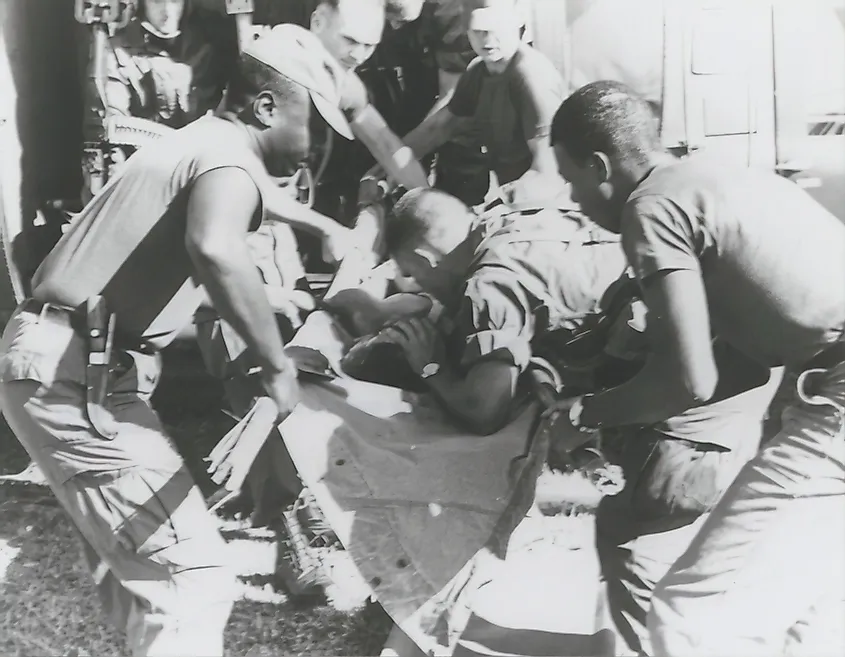
If there is one thing that remains unspeakable about the My Lai massacre in the United States, it is that the violence was not an aberration, but routine and systemic. Fifty years later, “My Lai” has become synonymous with this dark chapter of the American war in Vietnam, and it continues to haunt and interrupt the nation’s attempt to remember the war in the service of reconciliation and closure. In 1969, it sparked international outrage and fueled the antiwar movement. Gruesome photos of the killings began to circulate in the public one and a half years later when journalists broke the story.

The brutality has been well documented: American soldiers raped, mutilated, and tortured the villagers before killing them families were dragged from their homes, thrown into ditches and executed. An estimated 500 Vietnamese, mostly women, children, and the elderly, died in the massacre. In 1968, Charlie Company, a unit of the 11 th Brigade, 20 th Infantry, entered the village of My Lai in South Vietnam and systematically murdered the villagers. March 16 marks the 50 th anniversary of an event that few Americans want to remember.

Browse related titles and share using #AAAS2018. This guest post is part of our AAAS blog series published in conjunction with the upcoming meeting of the Association for Asian American Studies in San Francisco, CA, March 29-31, 2018. By Simeon Man, author of Soldiering through Empire: Race and the Making of the Decolonizing Pacific


 0 kommentar(er)
0 kommentar(er)
